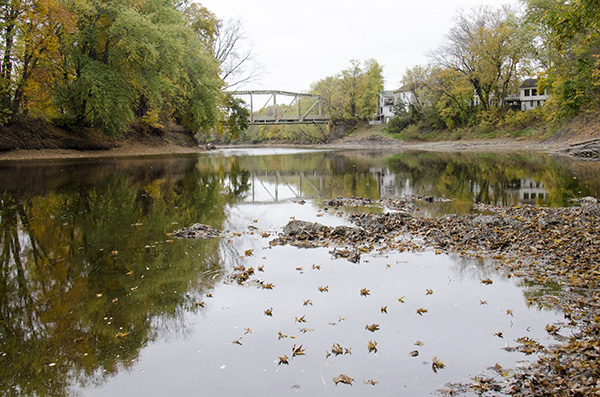

In 2016, New Paltz will lose its primary source of water when the New York City Department of Environmental Protection (DEP) begins repairs on the Catskill Aqueduct. The town and village have three years to find an alternate source of water.
The aqueduct provides about 400 million gallons of water daily to New York City and, according to Village trustee Tom Rocco, makes up 70 percent of the village’s water supply with the remainder coming from its own water treatment plan at Mountain Rest Road.
The DEP is responsible for managing the city’s aging upstate water infrastructure, a vital lifeline to city residents, which sometimes cause conflict with upstate residents who live in near the city’s reservoirs and aqueducts.
Representatives from the town and village will meet with DEP officials on Friday to hash out an intergovernmental agreement and outline the scope of the exploratory project, Rocco said. At this phase, the goal is to find potential alternate water sources in the town.
Rocco was selected to represent the village in discussions with the New York City DEP at the Oct. 9 meeting of the Village Board.
The Catskill Aqueduct was built in 1916 and transports water 163-miles from the Catskills to Yonkers and eventually New York City, supplying the city with about 40 percent of its water.
The aqueduct will be shut off for two 10-week periods in 2016 to increase the amount of water that can flow through it. This step is preparation for the future shutdown of the larger Delaware Aqueduct in 2021.
According to water quality group Riverkeeper, between 33 and 37 million gallons of water a day are leaking from the Delaware Aqueduct and could threaten it with “catastrophic collapse.”
The leaks have affected residents in Wawarsing who have complained about flooding caused by the aqueduct for more than 12 years, according to the Daily Freeman.
In 2011, the state legislature introduced a bailout program to assist Wawarsing residents affected by flooding.
The DEP will pay for the entire cost of locating an alternate water source and “any reasonable expenditures” necessary to implement the plan, Rocco said.
At an Aug. 15 joint meeting of the town and village, DEP officials said developing a local water source is expected to cost up to $7 million.
“We’re committed to providing funding,” Todd West, planning director of New York City’s Bureau of Water Supply said. “I’m not going to say full funding at this point.”
Village of New Paltz Mayor Jason West said that it would be unusual for New Paltz to have to pay for the consequences of New York City’s repair project.
Todd West, director of planning for the New York City Department of Enironmental Protection’s Bureau of water services, said though the DEC has committed to providing funding for a backup water source, a specific amount of funding won’t be announced until a water supply has been identified.
Town Supervisor Susan Zimet said she believes the water project can also serve as a first step toward developing South Putt Corners Road. The construction of a warehouse complex and hotel have been proposed at South Putt Corners, Rocco said.
South Putt Corners will also be the site of a multi-million dollar improvement grant to widen the road and add 6-foot-wide bicycle lanes next year — changes intended to improve traffic conditions in the area.
“The community identified South Putt Corners Road as industrial corridor,” Zimet said. “The corridor needs water, and sewer is a very big part of the equation.”
Rocco and Zimet both said sites west of the Wallkill River, like the county fairgrounds, may be viable sources of drinking water.
The exploratory project will be led by both the town and village engineers alongside a team of hydrogeologists.
“Right now I don’t see any obstacles,” Zimet said. “The village and town are working together with the DEC cooperatively – it’s a relationship that has never happened before.”
